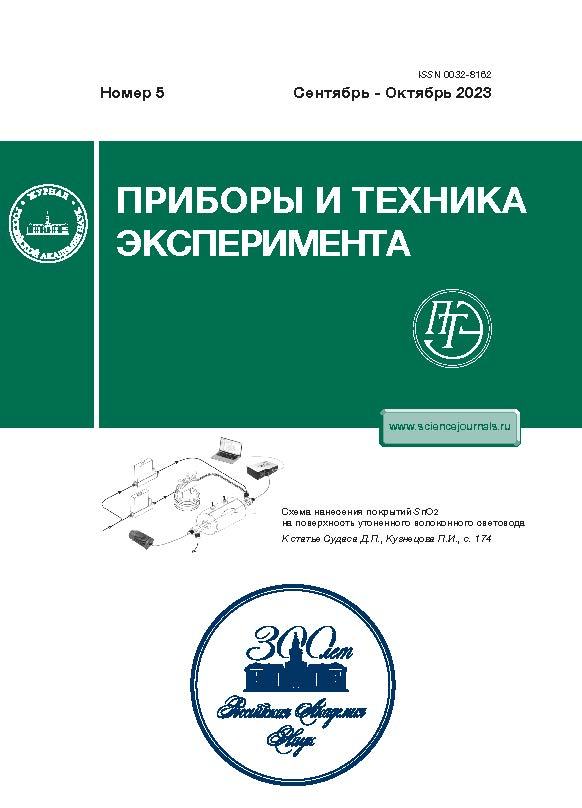Evaluation of the Capabilities of Distributed Acoustic Sensing with a Helical Fiber for Cross-Well Seismic Survey
- Autores: Chugaev A.V.1, Kuznetsov A.I.1
-
Afiliações:
- Mining Institute, Ural Branch, Russian Academy of Sciences
- Edição: Nº 5 (2023)
- Páginas: 167-173
- Seção: ФИЗИЧЕСКИЕ ПРИБОРЫ ДЛЯ ЭКОЛОГИИ, МЕДИЦИНЫ, БИОЛОГИИ
- URL: https://rjmseer.com/0032-8162/article/view/670429
- DOI: https://doi.org/10.31857/S0032816223050087
- EDN: https://elibrary.ru/ZJFDCJ
- ID: 670429
Citar
Texto integral
Resumo
To expand the possibilities of solving geophysical problems using fiber-optic distributed systems for recording acoustic waves, a comparison was made of the signals obtained by traditional hydrophones and a distributed fiber-optic system using a cable containing straight and helical fibers. The studies were carried out by the method of cross-well seismic survey. The possibility of separating direct and refracted head waves recorded by a distributed fiber-optic system and using them to obtain geological and geophysical information about the state of the massif is considered. It is shown that, when using a helically wound fiber, the first arrivals of a direct longitudinal wave can be traced to conduct cross-well seismic of the rock massif and evaluate the velocity distribution by the method of cross-well time-travel tomography on direct waves. For both straight and helical fibers, the stacking of the head waves makes it possible to obtain sufficiently clear arrivals of the head wave even in the dry part of the well and use it to determine the velocities of compressional waves of the near-borehole massif. The composition of the cross-well wave field depends on the radiation patterns of both the source and the receiver of acoustic waves. The use of multiple overlap systems makes it possible to vary the composition of the recorded wave field due to the mutual arrangement of the receiving and exciting lines depending on the tasks being solved.
Sobre autores
A. Chugaev
Mining Institute, Ural Branch, Russian Academy of Sciences
Email: chugaev@mi-perm.ru
614007, Perm, Perm krai, Russia
A. Kuznetsov
Mining Institute, Ural Branch, Russian Academy of Sciences
Autor responsável pela correspondência
Email: chugaev@mi-perm.ru
614007, Perm, Perm krai, Russia
Bibliografia
- Mateeva A., Mestayer J., Cox B., Kiyashchenko D., Wills P., Lopez J., Grandi S., Hornman K., Lumens P., Franzen A., Hill D., Roy J. Advances in distributed acoustic sensing (DAS) for VSP // SEG Technical Program Expanded Abstracts 2012. Society of Exploration Geophysicists, 2012. https://doi.org/10.1190/segam2012-0739.1
- Cai Z., Yu G., Zhang Q., Zhao Y., Chen Y., Jin Y., Zhao H. Comparative Research between DAS-VSP and Conventional VSP Data // SEG Global Meeting Abstracts. 2016. P. 81. https://doi.org/10.1190/RP2016-022
- Судакова М.С., Белов М.В., Понимаскин А.О., Пирогова А.С., Токарев М.Ю., Колубакин А.А. // Геофизика. 2021. № 6. С. 110. EDN: RNPIBI
- Gorshkov B.G., Alekseev A.E., Simikin D.E., Taranov M.A., Zhukov K.M., Potapov V.T. // Sensors. 2022 V. 22. P. 9482.https://doi.org/10.3390/s22239482
- Bakulin A., Golikov P., Smith R., Erickson K., Silvestrov I., Al-Ali M. Smart DAS uphole acquisition system for near-surface characterization and imaging // SEG Technical Program Expanded Abstracts. 2018. P. 201. https://doi.org/10.1190/segam2018-2995883.1
- Чугаев А.В., Тарантин М.В., Санфиров И.А. // Геология и геофизика. 2023. Т. 64. № 2. С. 293. EDN: MMQNLIhttps://doi.org/10.15372/GiG2022119
- Чугаев А.В., Кузнецов А.И. // Горное эхо. 2022. № 3 (88). С. 42. EDN: DYLFGI.https://doi.org/10.7242/echo.2022.3.7
- Bona A., Dean T., Correa J., Pevzner R., Tertyshnikov K.V., Van Zaanen L. // 79th EAGE Conference and Exhibition 2017. Netherlands: EAGE Publications BV, 2017. https://doi.org/10.3997/2214-4609.201701200
- Parker T., Shatalin S., Farhadiroushan M. // First Break. 2014. V. 32 (2). P. 61. https://doi.org/10.3997/1365-2397.2013034
- Kuvshinov B.N. // Geophys Prospect. 2016. V. 64 (3). P. 671. https://doi.org/10.1111/1365-2478.12303
- Innanen K. Determination of seismic-tensor strain from Helical Wound Cable-Distributed Acoustic Sensing cable with arbitrary and nested-helix winds // SEG Technical Program Expanded Abstracts 2017. Society of Exploration Geophysicists, 2017. P. 926. https://doi.org/10.1190/segam2017-17664060.1
- Egorov A., Charara M., Alfataierge E., Bakulin A. Realistic modeling of surface seismic and VSP using DAS with straight and shaped fibers of variable gauge length // First International Meeting for Applied Geoscience & Energy Expanded Abstracts. USA, OK, Tulsa: Society of Exploration Geophysicists, 2021. P. 184. https://doi.org/10.1190/segam2021-3576626.1
- Чугаев А.В., Тарантин М.В. // Горные науки и технологии. 2023. Т. 8. № 1. https://doi.org/10.17073/2500-0632-2022-06-10
- Correa J., Egorov A., Tertyshnikov K., Bona A., Roman R., Dean T., Freifeld B., Marshall S. // The Leading Edge. 2017. V. 36. P. 962. https://doi.org/10.1190/tle36120994a1.1
- Чугаев А.В., Санфиров И.А., Тарантин М.В., Томилов К.Ю. // Геофизика. 2020. № 5. С. 4. EDN: IVWWVL
Arquivos suplementares
















